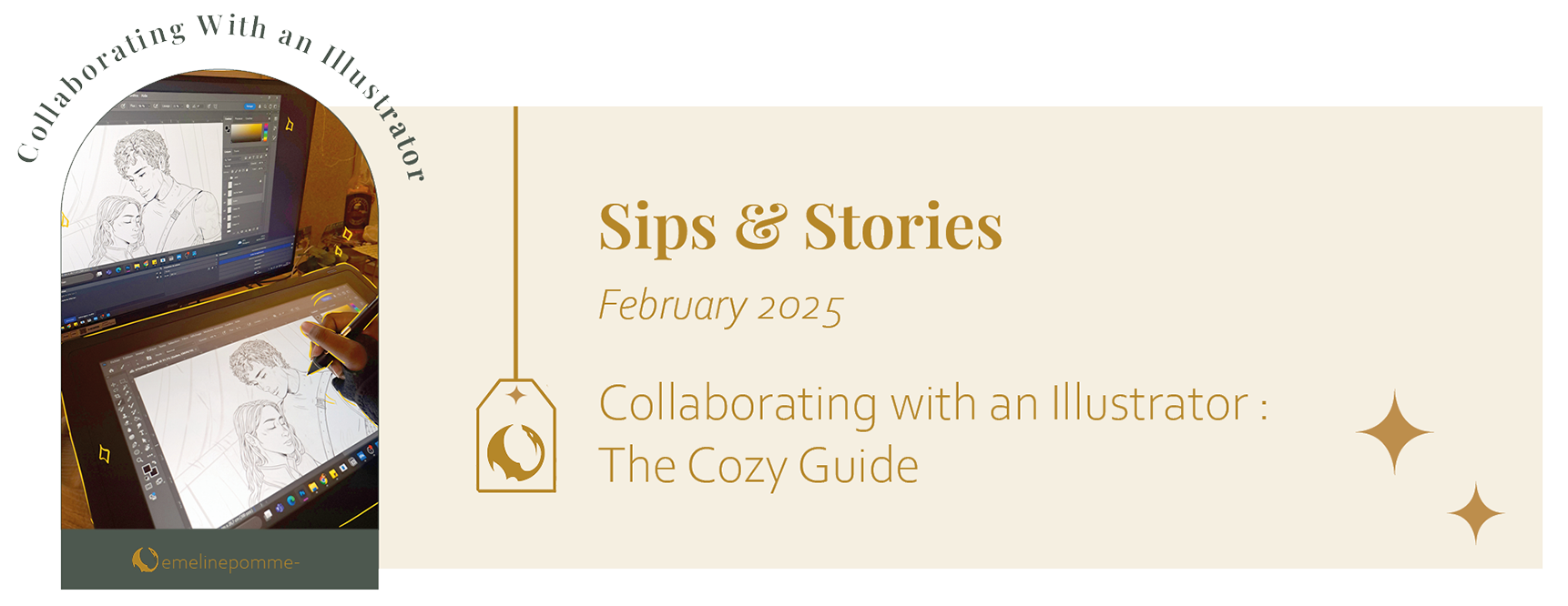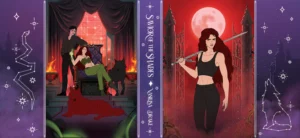
Art Process Guide
Bringing an idea to life through illustration is a magical experience, but if you’ve never worked with an illustrator before, you might wonder what to expect. How does the process work? What steps are involved? And how can you ensure a smooth collaboration?
This guide walks you through the journey of commissioning an illustrator—what to expect, how to communicate, and how to make the most of the creative process.
Let’s explore this process together, so you know just what to expect !
1. Reaching Out: The First Hello
Once you’ve found an illustrator whose style resonates with your vision, it’s time to say hello. Many artists showcase their work on personal websites or social media platforms. When you’re ready to connect, consider these common ways:
- Commission Forms: Many illustrators provide commission forms on their website. These forms gather important details about the project and help streamline the inquiry process.
- Emails: A direct and professional way to communicate, especially for larger projects.
- Social Media DMs: While messaging an illustrator on social media may seem convenient, it’s not always the best method. Due to the high number of scams and spam messages on platforms like Instagram and Twitter, many illustrators prefer inquiries through commission forms or emails.
💡 Tip: I strongly recommend using commission forms or email instead of DMs for serious inquiries. It keeps everything organized and ensures your request gets seen!
2. The Commission Journey : Step by Step
Once an inquiry has been received, the collaboration process typically follows these stages:
Step 1: Sharing Ideas & Outlining the Project
After reviewing the project details, the illustrator may request mood boards, reference images, or a written description to better understand the vision, commonly called an Art Brief . Based on this, a quote will be provided, outlining pricing, timeline, and terms.
💡 Pro Tip: Having a clear art brief at this stage helps avoid misunderstandings later!
📖 Related Post: How to Create an Art Brief for Your Commission
Step 2: Sketching the Magic
Once the project is confirmed, the illustrator will begin with rough composition sketches, exploring different layouts, poses, and elements. Typically, 1-3 sketch options are provided, and this is the best time to request major adjustments before moving forward.

Step 3: Refining the Sketch
After a composition is chosen, the sketch is refined with added details and structure. If major changes are needed, this is the ideal stage to request them.

Step 4: Adding Base Colors
The first step in the coloring phase involves laying down flat colors to establish the overall palette. Adjustments to colors are still possible at this stage before additional details are added.

Step 5: Rendering & Finalizing the Artwork
This is where the illustration truly comes to life! The illustrator adds lighting, shading, and texture, creating depth and atmosphere. Because this step involves refining details, major changes at this stage may require additional fees.

Step 6: Final Touches & Delivery
Once the rendering is complete and approved, the last refinements are made. The final illustration is then prepared in the agreed-upon format (e.g., PNG, JPG, transparent background, etc.). Some illustrators also provide a small guide on how to use or display the final artwork.
3. Communication & Timeline Expectations
Good communication is key to a smooth collaboration. Most illustrators communicate primarily via email, as it helps keep track of project details and feedback.
Typical Project Timelines:
- Small to Medium Commissions: Around 1 month
- Larger Projects (e.g., book covers, multiple illustrations): Up to 3 months
💡 Tip: If a project has a specific deadline, it’s best to inquire at least 2 weeks in advance to ensure availability.
4. Payment & Pricing
Illustrators typically use PayPal invoices or other secure payment methods. Payment structures vary but often include:
- Full payment upfront for smaller projects.
- 50% deposit for larger commissions, with the remainder due upon completion.
- Rush fees if an accelerated timeline is required.
Additional fees may apply for major revisions beyond what was initially agreed upon, as these require extra time and effort.
5. What Makes a Successful Collaboration?
A great collaboration is built on trust, communication, and mutual respect. Here are some key elements to keep in mind:
- Clear Communication: Providing references, feedback, and expectations early on prevents misunderstandings.
- Respect for the Process: High-quality illustrations take time, and rushing the process can affect the final result.
- Thoughtful Feedback: While revisions are part of the process, endless changes can slow things down. Keeping feedback clear and constructive helps move things forward smoothly.
Final Thoughts: Bringing Your Vision to Life
Working with an illustrator is an exciting and rewarding experience. Whether it’s for a book cover, a character illustration, or another creative project, understanding the process and setting clear expectations will make the collaboration enjoyable for both sides.
✨ Looking to commission an illustrator? Check out their Commission Form or portfolio to get started!
📖 Want to prepare a perfect art brief? Read our guide on How to Create an Art Brief for Your Commission.
And that’s a wrap for this month’s article. I hope this cozy guide makes the process of collaborating with illustrators more clear and exciting !
If you ever have questions, need a hand, or just want to chat about your next creative adventure, don’t hesitate to reach out—I’m always here to help.
Sending you all the cozy vibes and creativity in the world. Can’t wait to see what you create! ✦
Warm Hugs & Chocolate,
Emeline

🌟 Step-by-Step: Designing a Book Cover 🌟
Each month on my Patreon, I take you behind the scenes of my creative process! 🎨✨ Dive into this detailed step-by-step breakdown of my collaboration with the author and see how this piece came to life.
